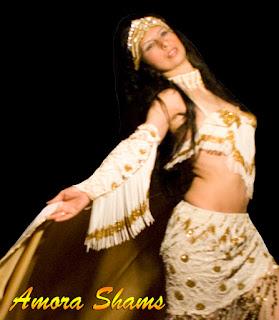Become a BellyDancer in Egypt 2024
Book with 50% your one-to-one private course with Prof. Amora Shams
Known for creating HQ BellyDancers in time record, only 20 days starting from zero.
LOCATION
You choose to pay a higher fee if booking for Amora Shams to come to teach you in Egypt or your location, or instead join her travels around the world for a cheaper fee. Not needed to vaccinate to study this course.
Only female students accepted
If choosing to study in Egypt the place will be near Cairo.
ACCOMODATION
The fee includes a room for yourself, sharing the flat with the teacher.
Other expenses are the food, the transportation, touristic or cultural places you could visit.
COURSE TIME-TABLE
The course has 20 classes of 3 hours each day when studied face to face in one place.
20-28 DAYS COURSE
Total 20 days that can be studied all in 3 weeks in one row without a day off, or in 28 days having weekends off or for revisions.
EXAMS
The course has 4 practical exams and 3 written exams
CERTIFICATION
Prof. Amora Shams provides with 2 type of certificates, one is the Private School Certificate which is given by hand during the course, at the end of each level when student gets at least a pass mark overall, and when the program has ended, the highest level achieved I will apply for been issued by the UNESCO Dance Department, and they will send it to you by post. Should arrive up to 6 months after the course is taught.
The UNESCO Dance Level Certificate is Globally recognised, in all the countries of the World, and all the continents. Is the official and international dance certification.
ABSOLUTE BEGINNERS ARE WELCOME
Is not an inconvenient to have some knowledge in BellyDance as this course is designed for all starting levels.
You will learn from absolute beginner level until professional level, learning all the movements, all the traditional props (veil, wings, cymbals, cane, sword and candelabra), and all the traditional tools and tricks of the trade to become a successful BellyDnacer.
CAN YOU LEARN ALL OF THE COURSE IN JUST 20 DAYS?
Of course you can!! If other students could achieve it, you also can.
The only conditions to achieve the good results are the following:
1) This course structure was related by Prof. Amora Shams, so she is the only teacher in the world that can teach in the way she does, so is needed to study only with her.
2) To pass with a good mark the written and practical exams, is a must to do the daily written and practical homeworks, that normally takes longer to produce them than the daily teaching hours, specially in Level 1.
From level 2 homeworks are easier.
3) While the master classes of Prof. Amora Shams are taking place, you must be very concentrated and take notes.
4) Follow Amora advises and correct your errors as soon as possible. When making an error she will quickly see it and correct it, then that error you need to work on it, repeating many times the correct movement, so the error goes away, the same with the written homeworks and the notes, which must be corrected by the master teacher Amora, so you can thrive properly and efficiently learn very quickly.
Is the most intensive BellyDance course in the planet, is hard, specially the first week, but after becomes easy, and joyful.
COURSE STRUCTURE
Level 1: Beginner Level
Is to learn all the BellyDance movements, but you also learn on the first class the Pharahonic Ancient Egyptian Dance and it's evolution until nowadays, it's therapeutic use and dancing styles.
Level 2: Intermediate Level
This level is to learn to dance traditionally by improvisation, first recognising the different Arabian instruments, then the relationship between the movements you earned and the music you listen, starting from taxims, then baladys and developing to solo tablas more known as percussions. Also in this level you will learn how to play and improvise with cymbals and the veil.
Level 3: Advance Level
This level is to learn to create any Choreography respecting the music tradition structures, learning what to do in each part of the different pieces of instrumental music. Also you will learn to dance by improvisation to Saidi Cane Dance as a female dancer and to dance with the wings or capes for presenting yourself as a dancer to your public.
Professional Level
This level is to prepare you as a pro dancer teaching you how to create an impressive traditional show, to create your classes and school to be a successful teacher. Also in this level you learn to dance traditionally with the sword and the candelabra.
ARE YOU READY TO CHANGE YOUR LIFE?
BOOKINGS
Book your private course with the 50% in advance.
- Get 20% discount when booking more than 6 months in advance
- Get 10% discount when booking between 6 to 5 months in advance
- Get 5% discount when booking between 4 to 3 months in advance.
Bookings close 1 month in advance before start the course.
The remaining 50% is paid when meeting face to face to start your course.
Email:
BecomeBellyDancer@gmail.com
FEEDBACKS
Check what other students said about this course and Prof. Amora Shams teaching techniques on the website:
www.GoldenBellyDancers.com






